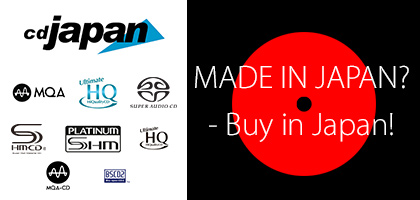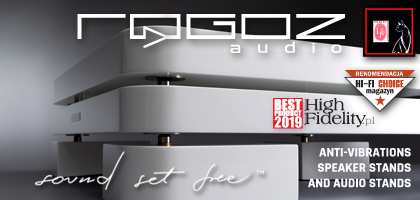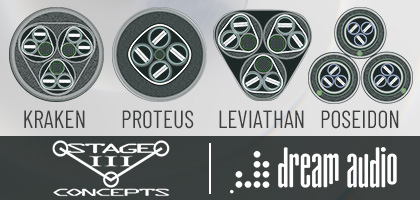No. 260 January 2026
- COVER REVIEW: EVERSOLO DAC-Z10 ⸜ digital-to-analog converter/preamplifier » CHINA
- AWARDS: BEST OF 2025 according to the HIGH FIDELITY » WORLDWIDE
- KRAKOW SONIC SOCIETY № 154: CRYSTAL DISC • AudioNautes Recordings » ITALY - JAPAN - POLAND
- REVIEW: FEZZ AUDIO Luna Mini Evo ⸜ integrated amplifier » POLAND
- REVIEW: GARLUBIDOR Divinity ⸜ digital-to-analog converter » CHINA
- REVIEW: XAVIAN Natura Unica ⸜ loudspeakers • stand-mounted » CZECH
- MICRO-REVIEW: ACOUSTIC REVIVE QSB-3810 ⸜ spike pads » JAPAN
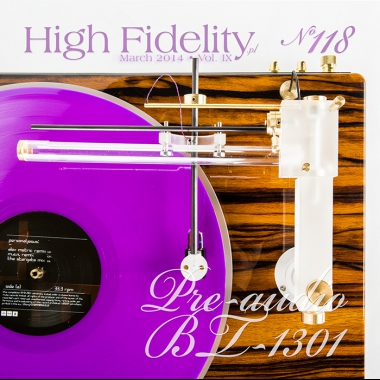

|

|
|
Unboxing – a few words about boxes
From the cycle: I’m an audiophile and proud of it PROJECT 

I hurt over the absence of our branch of industry in society’s general conscience and culture, because I don’t understand how products with such a profound impact on human lives – ones that allow you to interact with music, which is one of the most touching forms of art– aren’t treated as equals to other everyday products. Why are they so carefully erased and cropped out of magazines dedicated to luxury products? Perhaps, at least this is how I understand it, they scare people away with their level of complexity, their price and their “separation” from reality. Perhaps. But cars, yachts, watches, jewelry, and designer furniture aren’t cheap products either, and some of them are as “crazy” as audio components. And in spite of that they are still the center of attention for magazines about home design, hobbies and style. 
Maybe the problem lies within ourselves. Maybe we scare the “world” away by being a hermetic group? – That’s for sure. But it could also look this way – maybe our world is so unattractive aesthetically that there’s literally nothing to talk about. That’s also partially true. Limited examples of cooperation with world-class designers, e.g. Ross Lovegrove’s work with the Muon speakers from KEF won’t change anything on a larger scale. I used to think that Bang & Olufsen’s products could crack this icy wall, since their products are visible in every other movie. Yet nobody really associates them with audio – which is a big mistake – but with design. Paradoxically, companies that do most good for the audio world are those which we don’t associate with, i.e. gadget or headphone manufacturers, “signed” by car brands, for example (think Porsche Design, designed by Jules Parmentier, as well as headphones from Logic3). The conservatism of our branch seems to be the real problem. And I’m talking radical conservatism. Although every year there are devices being released that try to break away from the black-rectangle-with-knobs-and-speakers canon, they are mostly treated as a curiosity. When companies like Wadia present their ultramodern project Intuition 01, there’s an uproar over “betraying” the ideals. What ideals, damn it! The ideals of dullness, ugliness and simplicity? And it seems that the only companies that combine tradition with good design, and have moderate success to back it up are Continuum Audio Labs, Constellation Audio, Nagra, Boulder, Goldmund, which not only charm you with their sound, but also their looks. The “anachrophilia” (an expression coined by Ken Kessler, editor of “Hi-Fi News & Record Review”) trend is also doing well, repeating designs from the 1950s and 1960s. As it seems, they’re the best-looking audio designs out there right now. Unfortunately. Generally speaking, we’re ruled by mediocrity and blandness. That’s why when you get something like the Rubicon from Antelope Audio you’re immediately stunned, even before “firing it up” (pictures at the beginning). BOX. ONE
But not everything that we do is devoid of aesthetic value. Many smaller companies pay a lot of attention to design and let’s praise them for that! It’s a shame they’re not visible enough to improve the appearance of the audio world. But we do have something that could change the way things are at least a little, if displayed properly. I’m talking about albums and their special re-releases. 
It’s probably the most primal meaning of “box” nowadays. Earlier ones, i.e. boxes used to accumulate vinyl records by a certain band, are still in use, but used sporadically, since albums like that are released sporadically as well. Their value isn’t lose, however. CD boxes are continuing their legacy with great success. 
Here is where we get to the niche within the niche – Japanese boxes from Disk Union. It’s the most wonderful manifestation of a collector’s passion related to the Compact Disc, and also the most expensive one. It is the pinnacle of Japanese mastery concerning album re-releases. But before we get to that, I wanted to say a few words about what we know as “mini LPs”, “Cardboard Sleeves”, and “mini-vinyl replicas”. Each of the above contains part of their actual description. It’s a CD designed to look like a vinyl record. That’s why you get a narrow cardboard “envelope” that looks like a shrunk-down vinyl cover which the CD is slid into, as well as printed material with information about the album. Because we’re talking about Japanese editions, one of the most important parts is the OBI, i.e. a strip of paper with the Japanese description, attached to the discs’ spine. The better the quality of replicating the original album art, including the print details, texture, cutouts and other elements like embossing and gold touches, the better for the mini LP’s cover. It’s also good when the CD contains a printed inset of the original record, obviously modified to contain the titles from both sides of the vinyl, the Compact Disc (or SACD) logo, as well as the Jasrac sign indicating where the release comes from. The aforementioned information about the album is usually a Japanese essay, a track list, their authors, play time, as well as personnel, recording location, mastering information and the team responsible for its re-release. The Japanese are incredibly thorough with this, of course. The whole thing is inserted into a foil or cotton (better!) bag – obviously also manufactured in Japan. Aside from special editions such as Platinum SHM-CD, Crystal Disc or the UD from FIM, it’s usually the best-released musical material available on CD. BOX. THREE
Janusz, the host of most of the Kraków Sonic Society’s meetings, has been an admirer of all things Japanese for years and Japanese editions are a vast majority of his collection. He probably has everything that’s new and interesting, and it’s at his place that I see most of the things I later buy for myself. Mini LPs are expensive, that’s for sure. But nowadays I can’t imagine buying regular “plastics” (discs in classic “jewel boxes”), or even Japanese ones if I know there’s a “cardboard” version. It’s still not the top shelf, so to say. Because for their purpose, you also get boxes that hold them all in one place. Their job is to organize your collection as well as protect the discs – after all, they’ve been bought with our hard-earned money. 
Music could be listened to without physical media entirely, played back from a file. That’s the reality in most homes nowadays already, and it seems that files and a portable player (or a smartphone, in any other case) as well as the computer have replaced tape players completely, despite the facts they ruled in most homes back in the 1970s and 1980s (and even the 1990s in many cases). No bad word can be said about the logic in which the music is more important than the media carrier. This contemporary way of thinking can be translated into all other branches and it will be a very practical, pragmatic solution. 
The cost of Union Disk’s boxes is really prohibitive. An empty box costs from 60 to 150 US dollars (plus shipping and customs). To compare (as of 24.01.2014, ebay.com) a Queen box costs 94 USD, and a Yes box – from 79 to 150 USD. You can also buy a box with a set of mini CDs. In this case, the costs grow exponentially – a triple-drawer King Crimson box with a CD set costs 800 USD. A two-disc Mike Oldfield box with SHM-CDs costs 142 USD (free shipping). 
It’s worth remembering that there is an iron “hierarchy” of boxes. The European and American releases stand at the bottom of the ladder, as they are usually quite poor and meant for “plastic” editions. I’ve never seen them sold separately – they’ve always got their contents. Next of all, you have the slightly better-made boxes in a mini-LP-like format, but their print quality and size is significantly lower. The classic mini LP is 135 mm x 135 mm, while their European (and this includes Poland) counterparts are 124 mm x 124 mm. The boxes of the latter are 130 mm x 130 mm in size. Further on, we’ve got the bigger boxes from USA and Europe, the ones sized just like the mini LP look-alikes which they contain. Recently, I bought a box like that, which contained David Bowie’s records, and I’ve got to say that it looks really nice. Up top we’ve got Japanese edition boxes, with the discs inside. That’s how Pink Floyd’s “Discovery” remaster was released. And finally, the very best, the one box to rule them all – Union Disk boxes. 
Warning – because of their high price, Japanese boxes are often faked. That’s why it’s worth buying them from certified sellers. I do it through ebay.com, from a few Japanese guys who send me newsletters with all their new stuff. I usually buy mini LP discs at CD Japan and on ebay. A great source of information about mini LPs and boxes, including information about fakes, can be found at MiniLPs.Net. Good luck on your hunts! (Let’s live more beautifully)  Unboxing is the unpacking of new products, especially high tech consumer products. The product's owner captures the process on video and later uploads it to the web. The term has been labeled a new form of “geek” porn. en.wikipedia.org I recommend the blog Unboxing to you, see it HERE. 
NOTHING BUT MUSIC Large record companies work according to a set, functional an worked-out scenario. They choose the artist (band), sign a contract, record and publish the album, an then re-release the material contained within as long as possible. Usually adding rare tracks, live performance fragments, re-mastering material and changing the print design. If it’s an album by a renowned and loved artist, this can be carried on forever. It is an open secret that the release of the CD onto the market was the last lifesaver for the drowning music industry, which could once again sell the same material they had sold many times before. Now the cycle will repeat itself again with files. |

In Poland there aren’t too many enterprises like this. The releases of Skaldowie albums on vinyl (including colored ones!) by Kameleon Records and GAD Records are some of the most interesting ones recently released. The latter is a real phenomenon, and that’s because of one particular album: the soundtrack from the Polish TV show Sonda (Sonda. Muzyka z programu telewizyjnego). The first edition – 500 CDs and 300 LPs – disappeared from shelves nearly instantly, and almost didn’t even get to the stores, being practically snapped up on the way. On Allegro.pl, the Polish equivalent of eBay, the CD costs 200 zł, and I saw the vinyl for 600 zł for a short while. Fortunately there was a second release of CDs – no more LPs, though. Reducing the company’s legacy to one album would be a mistake, though. Especially since it’s a company with a few good years of experience.  If you take a look at GAD Records’ catalogue, aside from their soundtrack to Sonda, you’ll find a few other equally interesting albums. The ones that seemed most interesting to me are Jej portret by Włodzimierz Nahorny, Altus by Krzysztof Duda, and a live recording of SBB at the Jazz nad Odrą festival from 1975. I bought them in bulk, and shortly thereafter I reserved another one for myself – Krzysztof Komeda’s Dance of the Vampires on vinyl. Below you’ll find a few opinions regarding them (except for Komeda – his album premieres on February 3rd). Before you begin reading I strongly recommend buying all of those albums – the costs are low, yet the pleasure is immense. It would be best if you read the album’s review while holding it in your hands. The value of the following releases is mostly musical; I wouldn’t want my critique of their sound to influence your decision as to whether to buy them or not. In other words – buy away. Krzysztof Duda 
Krzysztof Duda is one of the most interesting personas on the Polish el-music scene. He preferred the melodic sort of the genre, full of melodious themes in short, compact compositions. The amazing beauty of his tracks gave them a permanent free ticket to the Polish Radio’s programs and into the television, where Duda quickly became one of the favorite el-musicians, whose compositions served as soundtracks for a multitude of TV shows (including the cult TV show Sonda). The material for Altus was compiled from a few different sources and spans over the time period between March 1980 and December 1985. They were recorded in the Polish Radio’s studio in Gdańsk as well as the artist’s home studio. The disc was released in a classic, plastic box with a 16-page booklet. In one of the tracks he is backed up by additional musicians – Włodzimierz Uściński on bass guitar and Zbigniew Lasek on drums (Baza Alfa). The compilation’s producer was Michał Wilczyński. Unfortunately, there’s no information on who, where and how of the re-master. We only know that the tracks were re-mastered from original tapes – I presume they’re analogue reel-to-reel tapes. I would gladly find out, however, what the output material was and would like to see some pictures etc. In the end this is a unique release and that’s how it should be treated. Right after my first audition of Altus, I ordered this artist’s newest album, Four Incarnations (Soliton.pl SL 3282, CD) recorded with Przemysław Rudź. It’s hard to find something more contrasting than those two releases, both in terms of music and sonic properties. The duet’s album is far better-recorded and produced, but also occasionally boring. Altus, on the contrary, is a collection of fantastic melodies, interesting tracks, it’s colorful, with a strong pulse beneath its skin, but it’s poorly-recorded. I compared its sound to what Jean Michel Jarre, Tangerine Dream, Klaus Schulze, and Kraftwerk were doing at the time, and there’s no hiding the fact that Mr. Duda’s material production is dynamically flat, and most importantly it sounds as if it were recorded (or played back, that’s possible, too) with a miscalibrated Dolby A (or even dBx) noise limiter. A similar effect is achieved with very heavy compression – a pretty choked sound. You can hear a lot of bass on it, but it’s mostly limited to upper bass – the bottom end is nearly absent. If it does manifest itself at all it is through higher harmonics, not the fundamental frequency. I’m wondering what a person (or team) responsible for the re-mastering should do. And I’m guessing that this is what the master tapes sound like. Should he try to faithfully recreate what’s on the tapes, or – in an agreement with the composer, of course – try to create a more balanced and better sound? Both paths are acceptable, but they are mutually exclusive. In this case it sounds like the aim was to change as little as possible in the sound. Release date: 9.12.2013 Sound quality: 5/10  SBB 
SBB’s performance at the Jazz nad Odrą festival in March 1975 was one of the first presentations of their premiere concert program, performed successfully for the next twelve months. In the form of one long suite the musicians presented, for example, fragments of their second (then still unreleased) and third (then still unrecorded) albums, including their greatest hit: Z których krwi krew moja. Over the years the band’s music lost its rock attitude, and the endless dialogues of an overdriven guitar and bass made way for increasingly frequent synthesizers. In 1975 the band reached the perfect balance between these two worlds, weaving in fiery improvisations with thoroughly thought-through compositions. The perfectly preserved material was re-mastered in 24 bits from the original radio tape. The booklet contains unpublished pictures by Tomasz Sikora, SBB’s photographer in the 1970s, as well as a short text about the band’s work in 1975. [Source: company literature] Had this material been released back then and had it been published by a famous record label, we’d be talking today about a historical music genre on the level of Krautrock and bands like Faust, Amon Düül II or Popol Vuh. It’s the same quality level of playing, and equally interesting music. Even today, nearly forty years after those events, it can still make the hair on the nape of your neck stand up. Release date: 22.06.2013 Sound quality: 6/10  Krzysztof Nahorny 
At the end of 1970, Włodzimierz Nahorny, a pianist, saxophonist, composer and music arranger, born on November 5th 1941 in Radzyń Podlaski, recorded an album for Polish Recordings that became a top hit in every jazzy category that bordered with easy listening. The whole album received the name of Nahorny’s own composition: Jej Portret (“Her Portrait”). After releasing the album he was contacted with an offer of converting the musical theme into a song; Jonasz Kofta wrote the lyrics and Bogusław Mec performed the song. 
On the album Jej portret he presented himself as a talented multi-instrumentalist (he plays the grand piano, alto saxophone, flute and harpsichord), in a light repertoire full of beautiful, captivating melodies imaginatively arranged by the kings of Polish jazz (Jan Ptaszyn-Wróblewski, Tomasz Stańko, Tomasz Ochalski and Nahorny himself). The blog “Polish Jazz” says that he chose the best Polish compositions from the 1960s and 1970s, some typical pop, some soundtracks, and gave them new value entirely using the language of jazz (see HERE). It’s a real musical gem. On one hand it’s really strongly rooted in its time, and the tunes bring to mind countless Polish films from the 1970s, and yet it also contains something from beyond the limits of space and time, which makes it as pleasurable to listen as the very best productions, like – for example – Gene Amos. Release date:: 16.02.2013 Sound quality: 7/10  Sonda. Muzyka z programu telewizyjnego GAD Records GAD CD 011 
Every Thursday in Poland, Andrzej Kurek and Zdzisław Kamiński proved that science doesn’t have to be boring. They were capable of intriguing the viewer with any topic: sport sciences, the processing of crude oil, breeding new types of cattle or the future of computers. They talked about complicated matters in an interesting and captivating way, illustrating their passionate discussion with motion picture clips. This was accompanied by music – incredible and unique music. [Source: company literature] 
The recordings on this album differ from track to track in terms of sound intensity, frequency range and dynamics. What they have in common is their rather bland and shallow midrange. This is true for most electronica recordings from the 1980s, unfortunately. The 1970s seem better when it comes to this. If you listen to the late Reichmann’s Wunderbar from 1978, you’ll know what I’m talking about. But the space is well-preserved, which is important in electronica. The sound’s attack is emphasized and contoured. So why do I come back to this album so often? Certainly due to nostalgia. But also because of the fact that it consists a surprisingly coherent set of tracks that could easily be mistaken for a single band’s composition. You’ve just got to buy it. CD premiere: 9.12.2013 Sound quality: 7/10  “HIGH FIDELITY’S” 10th ANNIVERSARY 
As I mentioned last month, on May 1st “High Fidelity” will be celebrating the first decade of its existence. The very first edition was published online on May 1st, 2004. Wanting to honor some of the manufacturers (especially Polish ones) who have been with us over this period of time, who were born and have grown stronger, and whose products deserve a special recommendation, I invited them to a mutual project which aims to emphasize this bond. I suggested to them the preparation of a unique, once-only available, limited edition of one of their products. Almost all of them responded enthusiastically to the invitation, and below you’ll find the list of products with some basic information about how they’ll differ from the regular versions. We’re also revealing the anniversary edition logo for the first time. 
Here’s a list of products that have already been confirmed. |
About Us |
We cooperate |
Patrons |
|
Our reviewers regularly contribute to “Enjoy the Music.com”, “Positive-Feedback.com”, “HiFiStatement.net” and “Hi-Fi Choice & Home Cinema. Edycja Polska” . "High Fidelity" is a monthly magazine dedicated to high quality sound. It has been published since May 1st, 2004. Up until October 2008, the magazine was called "High Fidelity OnLine", but since November 2008 it has been registered under the new title. "High Fidelity" is an online magazine, i.e. it is only published on the web. For the last few years it has been published both in Polish and in English. Thanks to our English section, the magazine has now a worldwide reach - statistics show that we have readers from almost every country in the world. Once a year, we prepare a printed edition of one of reviews published online. This unique, limited collector's edition is given to the visitors of the Audio Show in Warsaw, Poland, held in November of each year. For years, "High Fidelity" has been cooperating with other audio magazines, including “Enjoy the Music.com” and “Positive-Feedback.com” in the U.S. and “HiFiStatement.net” in Germany. Our reviews have also been published by “6moons.com”. You can contact any of our contributors by clicking his email address on our CONTACT page. |
 



|
   |
main page | archive | contact | kts
© 2009 HighFidelity, design by PikselStudio,
projektowanie stron www: Indecity





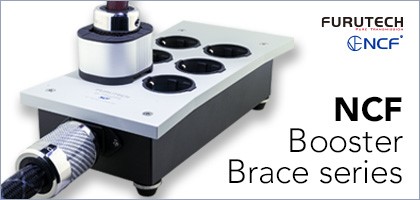

 udiophiles are interesting people or an interesting case – as a doctor would say. Their passion, listening to music on its highest possible level, lies somewhere on the borderline of art and technology. The tech part is obvious – music has to be played back by some (audio) device. The art is both the music that a music lover plays back on his beloved audio equipment, but also the components themselves, since many of them are true engineering masterpieces. A similar thing can be said about the aesthetic value of audio products, if not for the fact that a very small percentage of them has anything to do with artistic design.
You don’t have to search very far for a confirmation of this. Over ten years ago, Taschen Publishing published a compilation of biographies of “iconic” designers that had the greatest impact on industrial design in the book Industrial Design A-Z (Charlotte & Peter Fiell, Industrial Design A-Z, Taschen, Köln 2003) from their Icons series. Its cover featured the cosmic-looking Nivico 3240 GM television set manufactured by JVC. The entire album only contains a few products from the audio world (in the way we understand audio now), and those are all related to Sony and their Walkman. If the book was published again nowadays, the cover would probably feature an iPod and very little would change.
udiophiles are interesting people or an interesting case – as a doctor would say. Their passion, listening to music on its highest possible level, lies somewhere on the borderline of art and technology. The tech part is obvious – music has to be played back by some (audio) device. The art is both the music that a music lover plays back on his beloved audio equipment, but also the components themselves, since many of them are true engineering masterpieces. A similar thing can be said about the aesthetic value of audio products, if not for the fact that a very small percentage of them has anything to do with artistic design.
You don’t have to search very far for a confirmation of this. Over ten years ago, Taschen Publishing published a compilation of biographies of “iconic” designers that had the greatest impact on industrial design in the book Industrial Design A-Z (Charlotte & Peter Fiell, Industrial Design A-Z, Taschen, Köln 2003) from their Icons series. Its cover featured the cosmic-looking Nivico 3240 GM television set manufactured by JVC. The entire album only contains a few products from the audio world (in the way we understand audio now), and those are all related to Sony and their Walkman. If the book was published again nowadays, the cover would probably feature an iPod and very little would change. 